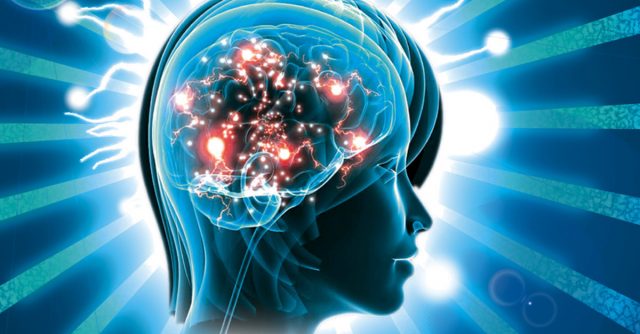Our different states of consciousness are connected to the architectural, electrical, and chemical environment of the brain which is constantly changing. Our thought and behavioral processes can change the architecture of brain connectivity and structure and the electrical and neurochemical neural oscillations of your mind as well.
Neuroscientists have recently established a correlation between an increase of alpha brain waves, either through meditation or electrical stimulation, and the ability to lower depression and boost creativity.
So, What Exactly Are Brain Waves?
The brain consists of billions of neurons in various areas which use electricity as a way to interact with each other. When your synapses are in synchrony, they form combinations of millions of neurons moving in lockstep as a harmonized “neural network” which is related to your mood and your thoughts. Brain waves are the combination of exactly this synchronized electrical activity in the brain.
Brain waves can be measured with an electroencephalogram (EEG). The first human EEG was recorded in 1924 by a German psychiatrist and physiologist called Hans Berger. He also invented the electroencephalogram and this device has been described as one of the most remarkable and important inventions in the history of clinical neurology.
There are 5 different types of brain waves: alpha waves, beta waves, delta waves, theta waves, and gamma waves. They change throughout the day and they’re influenced by what we are feeling, thinking, and doing at any given time.
Alpha waves occur when you are meditating, daydreaming, or practicing mindfulness. They boost your resilience to stress and increase your productivity.
Beta waves occur when we’re attentive, alert, focused, and engaged in decision making or problem solving.
Delta waves are the slowest brain waves and they’re mainly present when we sleep. Theta waves are also present during sleep but they’ve been observed in the deepest states of Zen meditation as well.
Gamma waves are the fastest brain waves. They directly relate to simultaneous processing of information from various regions of the brain.
Alpha Waves And Biofeedback
Alpha waves became the center of attention in the early 1960s and 1970s thanks to the creation of biofeedback – a technique used to consciously change brain waves by using direct feedback obtained by an EEG type of device.
When alpha oscillations are prominent, your sensory inputs tend to be reduced and your mind is free from unwanted thoughts. When your brain focuses on a specific thought positively or negatively, alpha oscillations tend to disappear.
Alfa wave biofeedback has been proven to be very helpful in the treatment of depression and anxiety. Since alpha waves are connected to relaxed mental states, an increase in the activity of alfa waves is the aim of most biofeedback training.
Alpha Waves, Meditation And Mindfulness
Meditation and mindfulness training produce considerably more alpha waves without the use of technological devices. Neuroscientists at Brown University have done research on how the brain achieves “optimal inattention” by altering the synchronization of brain waves between various brain areas.
The researchers have expressed hope that teaching people how to use the “power to ignore” by forming an alpha brain state through mindfulness will help anyone who struggles with chronic pain to minimize perceptions of pain and for people who suffer from anxiety or depression to reduce their symptoms.
Electrical Stimulation Of The Brain Can Create Alpha Oscillations
A study, carried out by the University of North Carolina in 2015, found the first evidence that a low dose of electric current of 10-hertz can improve the alpha brain wave activity and that it increases creativity by 7.4% in healthy grown-ups.
One of the authors of the study, Flavio Frohlich, PhD, explained that their aim was to use this approach to help anyone suffering from psychiatric and neurological illnesses. For example, there’s solid evidence that individuals who have depression have impaired alpha oscillations. If they could improve them, then they could potentially help a great number of people.
Here’s what Frohlich said: “The fact that we’ve managed to enhance creativity in a frequency-specific way—in a carefully-done double-blinded placebo -controlled study—doesn’t mean that we can definitely treat people with depression.
But if people with depression are stuck in a thought pattern and fail to appropriately engage with reality, then we think it’s possible that enhancing alpha oscillations could be a meaningful, noninvasive, and inexpensive treatment paradigm for them—similar to how it enhanced creativity in healthy participants.”
How Synchronized Brain Waves Fine-Tune Consciousness
In 2015, neuroscientists at the VA Boston Healthcare System identified a specific class of neurons that cause the creation of different brain waves which are related to different states of consciousness.
One of the authors of the study, Robert W. McCarley, said:
“We’ve known that the basal forebrain is important in turning consciousness on and off in sleep and wake, but now we’ve found that these specific cells also play a key role in triggering the synchronized rhythms that characterize conscious thought, perception, and problem solving.”
McCarley also added that the findings of the study may help find therapies for certain disorders, such as schizophrenia.


